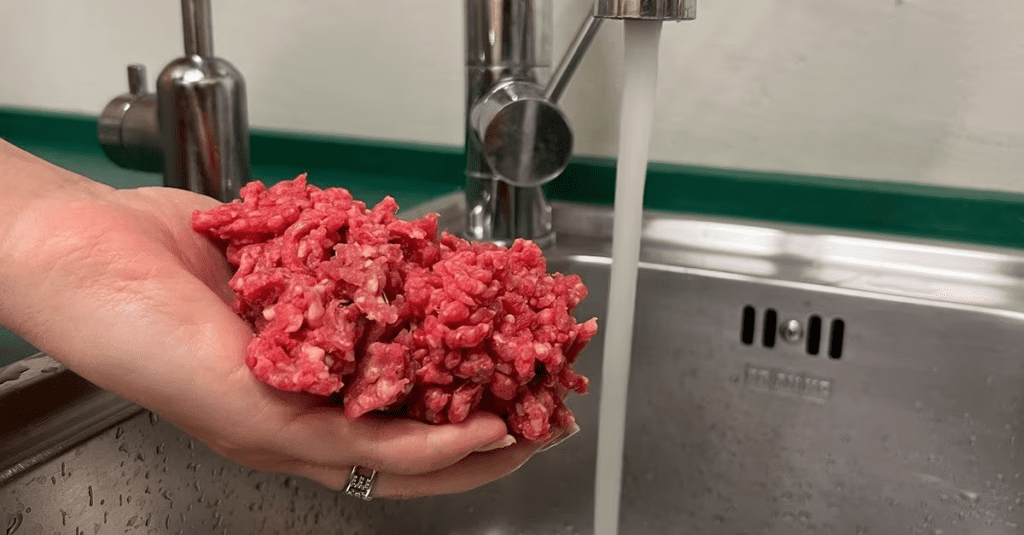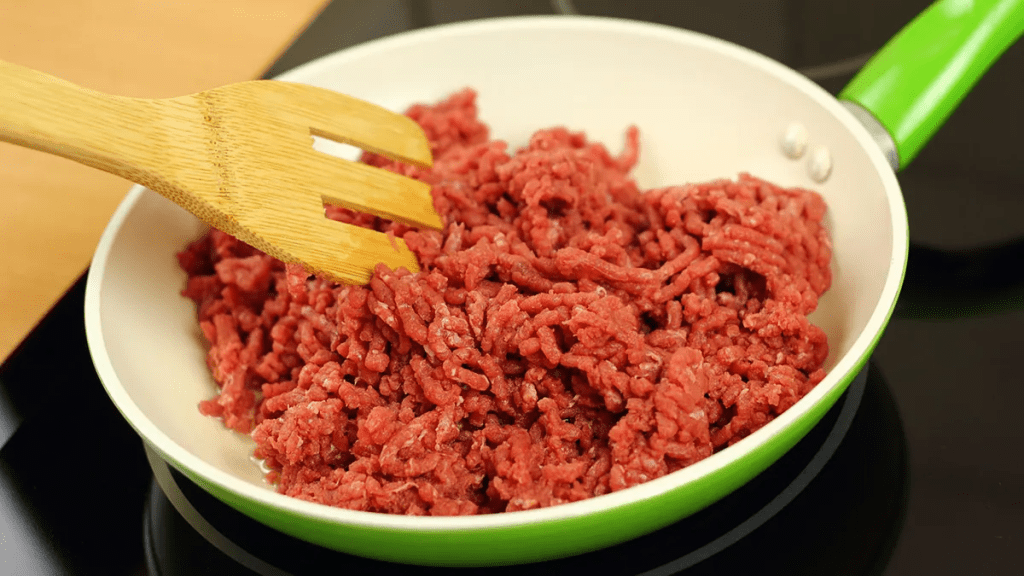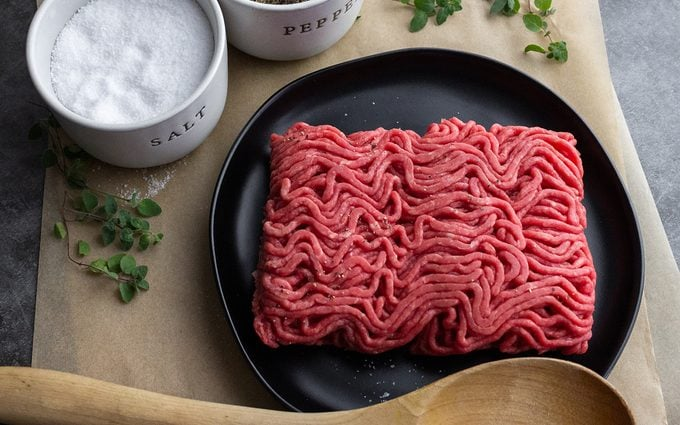Preparing wholesome meals for your family is a goal many of us share, but when it comes to kitchen practices, opinions often differ. Recently, a situation occurred in my family when my mother-in-law cooked dinner using ground beef—without rinsing it. While it sparked a personal debate about whether or not rinsing ground beef is necessary, this moment also highlighted a broader issue: what are the best food safety practices when preparing ground beef?

In this article, we’ll explore whether rinsing ground beef is a must, the science behind it, the potential risks of not rinsing, and how to ensure your meals are both safe and nutritious without unnecessary steps.
The Debate: Should You Rinse Ground Beef Before Cooking?
It’s easy to assume that rinsing ground beef is a good way to clean it before cooking. After all, we wash vegetables and fruits, so why not meat? However, when it comes to ground beef, rinsing it is not only unnecessary but can also be risky.
The U.S. Department of Agriculture (USDA) advises against rinsing ground beef because it can cause bacteria like E. coli or Salmonella to spread through splashing water. Instead of making the meat cleaner, rinsing ground beef might increase the chances of cross-contamination by transferring harmful bacteria onto kitchen surfaces, utensils, or other foods. The best way to ensure the safety of ground beef is to cook it to the proper temperature, not rinse it.
The Science Behind Rinsing Ground Beef: Why Experts Say No
The key to killing harmful bacteria in ground beef isn’t through rinsing but through proper cooking. Ground beef should be cooked to an internal temperature of 160°F (71°C) to destroy harmful pathogens that could make you sick. At this temperature, bacteria like Listeria, Salmonella, and E. coli are eliminated, making the meat safe to eat.
When you rinse ground beef, you risk spreading bacteria throughout your kitchen. Tiny water droplets can carry bacteria and contaminate your countertops, sink, and other foods. Cooking ground beef thoroughly is a far more effective way to ensure it’s safe without the risk of cross-contamination.
Health Risks Associated with Rinsing Ground Beef
For many, the concern over not rinsing ground beef stems from the fear of consuming bacteria. However, the truth is that rinsing meat doesn’t remove harmful bacteria—it merely moves them around. According to health experts, bacteria in raw meat is killed through heat, not water.
If ground beef isn’t handled correctly, rinsing can potentially make the situation worse by spreading bacteria across kitchen surfaces. This is known as cross-contamination. Even if you clean up afterward, the microscopic bacteria can be tough to remove, leaving your family exposed to potential health risks.
Instead of rinsing, focus on safe handling practices such as washing your hands and kitchen tools thoroughly after handling raw meat, and always cooking your ground beef to a safe temperature.
Nutritional Impact of Rinsing Ground Beef
Some people believe rinsing ground beef will wash away excess fat, leading to healthier meals. While rinsing can remove a small amount of fat, it also washes away some of the nutrients. Ground beef contains essential nutrients like protein, iron, and vitamins. Rinsing it down the drain isn’t just inefficient—it reduces the nutritional value of the meat.

A better approach is to purchase lean cuts of ground beef, which naturally have lower fat content. If you’re concerned about excess fat, you can always drain the meat after cooking. Simply pour off the excess fat or use a paper towel to blot it away. This method retains the nutrients while reducing unnecessary fat, without the need to rinse.
Balancing Family Preferences and Food Safety
The situation with my mother-in-law highlighted an important aspect of family cooking: sometimes, we have different ideas about what’s best. In cases like this, it’s crucial to strike a balance between respecting family traditions and ensuring food safety.
You can start by having open conversations about safe kitchen practices. If a family member has a particular cooking habit, like rinsing ground beef, you can gently suggest alternatives based on expert advice. Cooking together can also be a great way to demonstrate how to follow food safety guidelines while still preparing delicious meals.
Ultimately, finding common ground will create a positive cooking environment, where everyone feels safe and respected at the dinner table.
Practical Tips for Cooking Ground Beef Safely

To make sure your ground beef meals are not only delicious but also safe, follow these practical tips:
- Buy Fresh Beef: Always purchase fresh ground beef from reputable stores and check the packaging for signs of freshness.
- Store Correctly: Ground beef should be refrigerated and used within two days. If you need to keep it longer, freeze it for up to four months.
- Clean Surfaces Thoroughly: After handling raw beef, wash your hands, utensils, and kitchen surfaces thoroughly to prevent cross-contamination.
- Cook to the Right Temperature: Ground beef must reach an internal temperature of 160°F to kill harmful bacteria. Use a meat thermometer to check.
- Drain Fat, Don’t Rinse: To reduce fat, use a colander to drain cooked ground beef or blot it with paper towels. This method keeps your meal healthier without losing nutrients.
By incorporating these tips into your cooking routine, you’ll ensure your family enjoys both safe and flavorful meals.
Conclusion: Making Informed Choices in the Kitchen
When it comes to preparing meals for your family, especially dishes made with ground beef, making informed decisions is essential. Rinsing ground beef is not necessary and can actually introduce more risks than benefits. Instead, focus on thorough cooking, proper handling, and safe storage practices to ensure your meals are safe and nutritious.
By choosing lean cuts of ground beef and draining excess fat after cooking, you can create healthier meals without sacrificing flavor. And by engaging in conversations with family members about safe kitchen habits, you’ll foster a cooking environment that prioritizes everyone’s health and safety.
In the end, cooking is about more than just food—it’s about ensuring that the meals you share with your loved ones are prepared with care and attention to safety.


